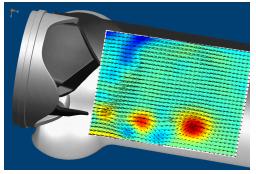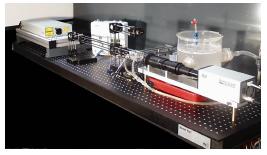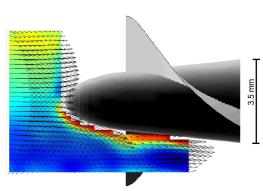Bio-Fluid Mechanics

The research in the laboratory for bio-medical fluid mechanics focuses on flows in artificial organs and implants like artificial heart valve prostheses, blood pumps, microfluidic filter systems, etc. and on flows in biological/human systems such as the circulatory blood system and the human airways. Experimental methods like scanning and digital particle-image velocimetry (SPIV, PIV) and numerical schemes are used to analyze and optimize the flow field through such configurations.

All research activities are performed in close relation with industrial and clinical partners. Studies are supported by industrial grants, the German Research Association (DFG), European Union, and other public institutions.
The investigation of artificial heart valves for certification (ISO, CFN, FDA) and research comprises, among other things, standard tests to analyze leakage, cavitation, and leaflet kinematics in pulsatile flow. The measuring equipment includes modern digital high-speed cameras, high-intensity Nd:Yag lasers, and high-resolution CCD cameras to obtain top quality data for various intricate flows.
For example, PIV measurements are performed for a three-leaflet heart valve prosthesis in pulsatile flow to understand qualitatively and quantitatively the flow physics. The results, that evidence the vortex dynamics, stagnation regions, shear layers etc. behind the leaflets, serve as a data base to improve the valve design. High-speed recordings of the leaflet kinematics provide additional information of the leaflet motion and the impact velocity, which is important for possible cavitation at closure and the valve's lifespan.

The flow in a micro-axial blood pump is measured using phase-locked DPIV at a rotating speed of 33000 rpm. A picture of the optical setup is given above. The highly resolved velocity distributions provide information on the onset of flow separation at critical pressure differences and represent necessary data to optimize the pump geometry with respect to blood damage.
In a clinical project an inspection system was built at the Institute of Aerodynamics to determine the surface coordinates of the abdominal wall of a human body. The system is based on the technique of light-grid topometry. The abdomen wall compliance and flexibility is tested using parameters calculated from the surface profiles.

The system allows to investigate different materials of synthetic meshes after being implanted in the abdominal region. Furthermore, it can be used to diagnose problems of the curvature of the spine.

